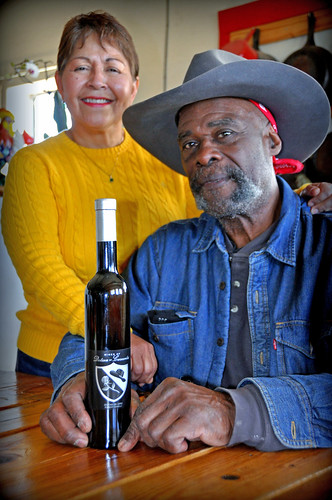
A former professional football player was able to realize a life-long dream of owning his own vineyard with the help of USDA’s Natural Resources Conservation Service.
After an illustrious career with the NFL’s Oakland Raiders, Alphonse Dotson found himself retiring as a fairly young man. But after 15 years of raising a family in Acapulco, Mexico, Dotson decided to return to his home state of Texas and try his hand at raising grapes.
He began consulting with experts in the grape growing industry, reviewing real estate prices and educating himself on all aspects of the business.
After a thorough search, Dotson found his ideal property in Voca. When the dotted line was signed on the purchase, Dotson approached his local NRCS office for advice and tools to manage his natural resources.
NRCS experts created topography maps that showed the land’s contour and field elevations, and took soil samples on his property. Dotson wanted to know every inch of his land, and NRCS provided the technical assistance he needed to begin his endeavor.
Even though the property did not yet have a home for his family, it was able to sustain the plants. Over the Cinco de Mayo holiday weekend in 1997, the Dotson family and local residents planted over 6,800 grapes on 11 acres -- thus Certenberg Vineyard was born.
Next, NRCS and Dotson worked together to put together a comprehensive conservation plan with goals that included removing invasive mesquite on the rangeland adjacent to the vineyard. With that accomplished, native grass returned and forage production increased, allowing Dotson to run a small herd of beef cattle on the land next to his vineyard.

Dotson kept a watchful eye on his young grape plants. Using the topography maps obtained from NRCS as blueprints, he installed a drip irrigation system that would protect his young plants from drought.
The former football player has become a conservationist. “I have never met anyone more like a sponge.” says NRCS district conservationist John Newman. “He has been exceedingly eager for ideas and they fall on receptive ears. He didn’t just sign a piece of paper and become a conservation partner, he called directors, asked questions and would try just about anything to see if it worked.”
Dotson didn’t stop at producing premium grapes—he also worked with a local winery to create an award-winning wine. The first bottle established Dotson-Cervantes Winery, and it showcases all of Dotson’s hard work.
Follow NRCS on Twitter
Check out other conservation-related stories on the USDA blog.
